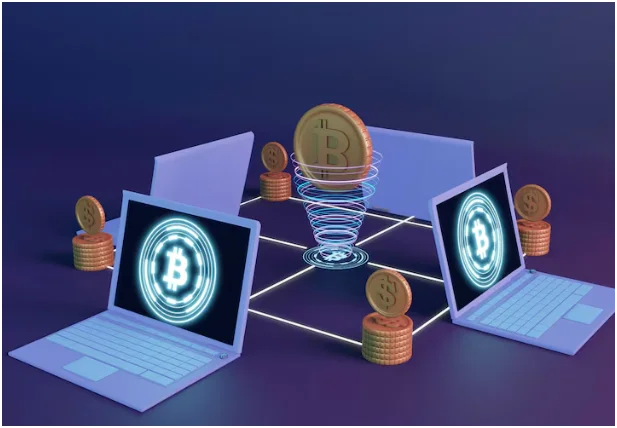In the rapidly evolving world of finance, Decentralized Finance (DeFi) has emerged as a disruptive force, reshaping traditional banking networks and empowering individuals and businesses alike. DeFi leverages blockchain technology to create open, transparent, and intermediary-free financial services. From lending and borrowing to trading and asset management, DeFi offers a peer-to-peer system accessible to anyone with an internet connection.
As of 2025, the DeFi market continues to grow, with total value locked (TVL) reaching trillions of dollars, according to industry reports. But what makes DeFi truly revolutionary? In this guide, we break down its key components, with a focus on DeFi platforms, secure wallets, and tokenization services, exploring how they work, their benefits, and real-world applications.
What Is Decentralized Finance (DeFi)?
Decentralized Finance is essentially a suite of financial applications built on blockchain networks primarily Ethereum and its layer-2 solutions, but also on chains like Solana and Binance Smart Chain. Unlike traditional finance (TradFi), which relies on banks, brokers, and regulators as gatekeepers, DeFi uses smart contracts self-executing code that automates transactions without human intervention.
This decentralization reduces costs, increases transaction speed, and enhances financial inclusion, enabling even unbanked individuals in developing countries to access global finance.
A major reason for DeFi’s popularity is that it is permissionless. Anyone can access or create financial products without centralized authority approval. Yield farming, for example, allows users to earn passive income by providing liquidity to protocols.
However, DeFi is not without risks. Vulnerabilities in smart contracts and market fluctuations have led to events such as the 2022 Ronin Bridge hack. Security audits, insurance protocols, and improved best practices continue to make DeFi more secure and reliable.
As the ecosystem matures, DeFi is converging with real-world assets (RWAs), Web3 technologies, and AI-powered analytics. Companies are increasingly using DeFi to optimize operations, from cross-border payments to automated treasury management. For beginners, resources like Understanding Decentralized Finance (DeFi): Basics and Functionality provide a clear introduction.
The Rise of DeFi Platforms: Building the Backbone of Decentralized Ecosystems
One of the cornerstones of DeFi is the development of robust platforms that support a variety of financial operations. DeFi platforms include decentralized exchanges (DEXs), lending protocols, and yield aggregators, enabling users to trade, borrow, and lend cryptocurrencies directly, without intermediaries.
Platforms like Uniswap or Aave allow frictionless token exchanges and flash loans, where users can borrow assets without collateral as long as the loan is repaid in the same transaction.
A key feature of these platforms is the use of Automated Market Makers (AMMs), which rely on liquidity pools rather than order books. This ensures constant asset availability and reduces trading slippage.
For businesses and developers, creating custom DeFi platforms requires integrating smart contracts, oracle networks for real-time data, and user-friendly interfaces.
Terms like “DeFi platform development” and “decentralized exchange platform” indicate the technical expertise required to build scalable, regulation-compliant solutions, such as those meeting MiCA standards in Europe.
Well-designed DeFi platforms can transform business models. Fintech startups, for instance, use decentralized lending platforms where interest rates are algorithmically determined, removing intermediaries and providing higher returns for lenders. Security is paramount, with multi-signature approvals and audited code preventing exploits.
Looking ahead, layer-2 scaling solutions are reducing gas fees and improving transaction speeds. Hybrid models combining DeFi with traditional finance, such as tokenized bonds, have the potential to unlock trillions in previously illiquid assets.
Securing Your Assets: The Role of Secure Wallets in DeFi
No discussion of DeFi would be complete without addressing security, and that’s where secure wallets come into play. A secure wallet in the DeFi context is a digital tool that allows users to store, manage, and interact with cryptocurrencies and tokens on blockchain networks.
Unlike custodial wallets offered by centralized exchanges, DeFi wallets are non-custodial, meaning users retain full control over their private keys. This empowers true ownership but also places the responsibility of security squarely on the user.
Popular examples include MetaMask and Trust Wallet, which support multiple chains and enable interactions with dApps (decentralized applications). Key features of a top-tier secure wallet include hardware integration for cold storage, biometric authentication, and recovery phrases for backup. In the realm of “DeFi wallet development,” emphasis is placed on robust encryption and resistance to phishing attacks, which remain a common threat in the crypto space.
For individuals dipping their toes into DeFi, a secure wallet is the gateway to activities like staking or participating in governance votes for protocols. Businesses, on the other hand, use enterprise-grade wallets to manage treasury funds, automate payments, and ensure compliance with anti-money laundering (AML) standards. The rise of multi-chain wallets has made it easier to navigate fragmented blockchain ecosystems, reducing the friction of asset transfers.
However, security breaches can be devastating, think of the millions lost in wallet exploits due to weak seed phrases or malware. To mitigate this, modern secure wallets incorporate social recovery mechanisms and zero-knowledge proofs for privacy-preserving transactions.
If you’re building or enhancing your DeFi strategy, exploring professional secure wallet development can provide customized features like integrated DeFi analytics and multi-factor authentication, helping safeguard your digital assets effectively.
As DeFi evolves, secure wallets are becoming smarter, with AI-driven threat detection and seamless integration with Web3 browsers. This not only enhances user experience but also builds trust in the ecosystem, encouraging wider adoption among retail and institutional investors.
Revolutionizing Assets: Tokenization Services in DeFi
Tokenization is perhaps one of the most exciting innovations within DeFi, transforming real-world assets into digital tokens that can be traded on blockchain networks. Tokenization services involve converting physical or intangible assets like real estate, art, or even intellectual property into fungible or non-fungible tokens (NFTs). This process democratizes access to investments, allowing fractional ownership and 24/7 liquidity.
In DeFi, tokenization bridges the gap between traditional assets and blockchain, enabling things like tokenized stocks or real estate-backed stablecoins. Platforms like Synthetix demonstrate this by creating synthetic assets that mirror real-world prices without holding the underlying asset.
For those searching for “asset tokenization services” or “blockchain tokenization,” the focus is on compliance, as regulations like SEC guidelines in the US require security tokens to adhere to securities laws.
The benefits are immense: increased liquidity for illiquid assets, reduced transaction costs, and global accessibility. A farmer in Africa, for instance, could tokenize their land to raise capital from international investors without selling the property outright. Challenges include oracle reliability for price feeds and legal frameworks, but solutions like Chainlink’s decentralized oracles are addressing these.
Businesses leveraging tokenization can create new revenue streams, such as loyalty programs via utility tokens or crowdfunding through initial coin offerings (ICOs) reimagined as security token offerings (STOs). If tokenization intrigues you, professional tokenization service providers offer end-to-end solutions, from smart contract creation to regulatory consulting, ensuring your assets are tokenized securely and efficiently.
The Broader Impact and Future of DeFi
By combining DeFi platforms, secure wallets, and tokenization services, a synergistic ecosystem emerges, driving innovation, accessibility, and efficiency. Businesses gain faster access to capital, while users enjoy financial freedom.
Education remains essential understanding risks like impermanent loss or wallet security can prevent costly mistakes. Companies like HSP Holding provide end-to-end solutions, blending technology with practical expertise. As DeFi merges with AI and metaverse technologies, possibilities expand further, from AI-powered investment bots to virtual economies.
In Conclusion: DeFi Is a Financial Revolution
Decentralized Finance is more than a trend; it’s a paradigm shift in how we think about money. By leveraging DeFi platforms for trading, secure wallets for asset protection, and tokenization for asset innovation, both individuals and businesses can thrive in this emerging financial landscape.
Success in DeFi requires balance: curiosity, prudence, and action. Start with the fundamentals, secure your assets, explore tokenization opportunities, and gradually expand your engagement with decentralized systems. Those who do will not only participate in a new financial paradigm they will help shape it.
DeFi represents freedom, innovation, and opportunity, accessible to anyone ready to learn, adapt, and embrace the decentralized future.


